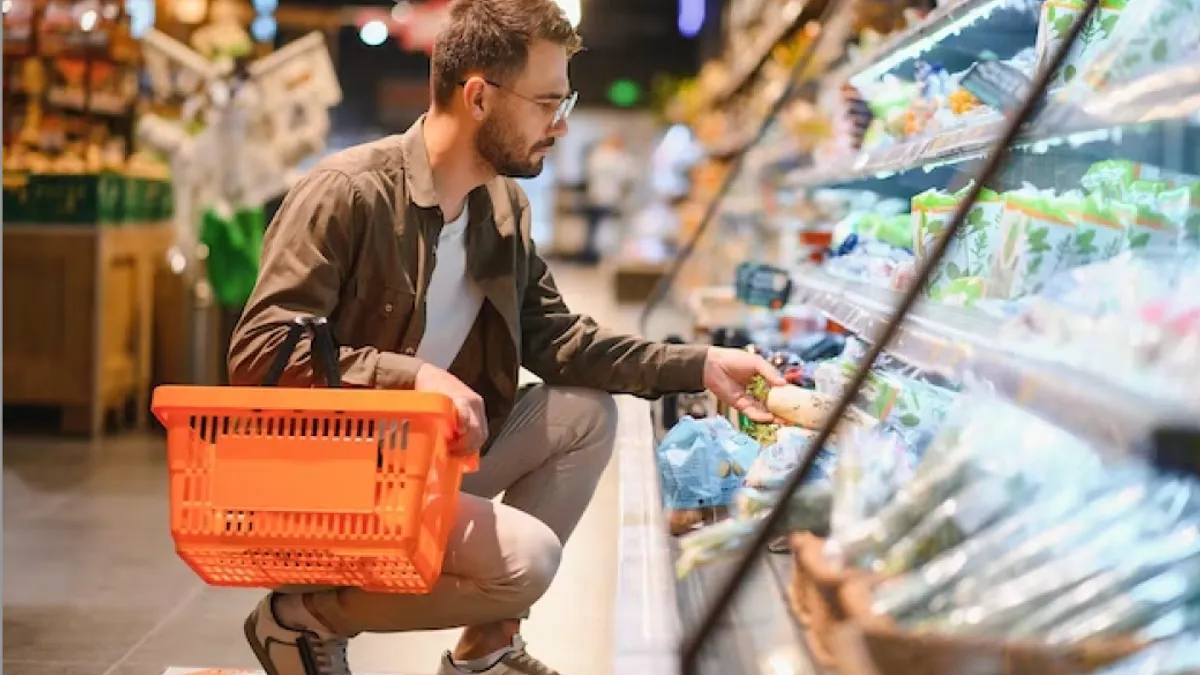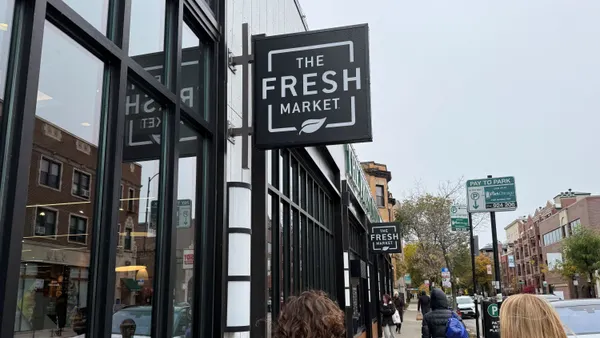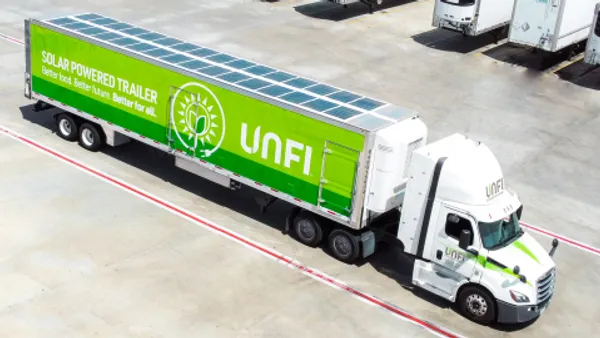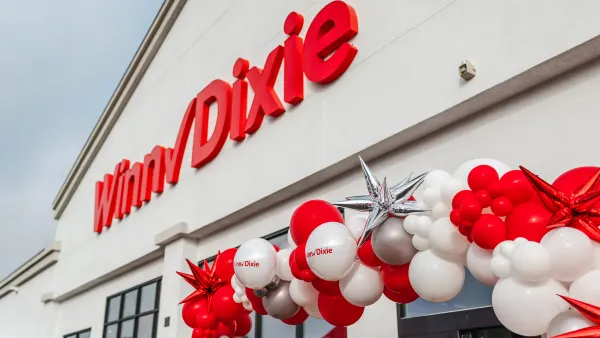Retailers working to meet the 2026 compliance date for FSMA 204 are building end-to-end traceability into their operations, taking a step into the future of food safety.
I don't think this is the end of this traceability discussion around food.

Matt Hilbrink
Vice President of Enterprise Risk & Asset Protection for The Raley's Companies
“I don't think this is the end of this traceability discussion around food,” shares Matt Hilbrink, Vice President of Enterprise Risk & Asset Protection for The Raley's Companies.
The traceability rule, part of the Food Safety Modernization Act (FSMA), will allow for faster identification and rapid removal of potentially contaminated food from the market. The FDA has designated impacted foods to a Food Traceability List (FTL) – and retailers and suppliers must simultaneously meet recordkeeping requirements by the deadline.
The Raley’s Companies, founded in 1935 and headquartered in West Sacramento, CA, is currently working towards meeting the January 20, 2026, compliance deadline. It’s a big task for a company that includes more than 235 locations across seven states under nine banners: Raley’s, Bel Air, Nob Hill Foods, Raley’s O-N-E Market, Bashas’, Bashas’ Diné, Food City, AJ’s Fine Foods and Eddie’s Country Store.
I sat down with Hilbrink to understand how his team is working to assess the IT systems needed to meet the deadline, how complex the end-to-end transfer of Traceability Lot Codes (TLC) is, and the importance of transparency and data exchange.
Sally Robinson: Tell us a little about your role at The Raley's Companies:
Matt Hilbrink: I'm Vice President of Enterprise Risk & Asset Protection for The Raley's Companies, the holding company that owns several different entities and operating companies. So that is the Raley’s retail operations in California and Nevada, Bashas’ retail operations in Arizona and New Mexico, fieldTRUE (a subscription produce company), Capitol Mill Works, and a couple logistics companies. I’m responsible for managing enterprise risk across all those companies… if it can go bad, generally one of my Teams is responsible for managing through it.
Robinson: What do you think are the biggest benefits to compliance with FSMA 204?
Hilbrink: The benefits would be having a readily identifiable chain associated with products at retail. So, that could mean tracing a product all the way back to the origin and literally the field on the day it was picked. Beginning-to-end traceability associated with specific Lot numbers (TLCs) of qualifying items covered by FSMA 204. So true supply chain transparency.
Robinson: How could consumers potentially benefit from FSMA 204 in the future?
Hilbrink: Once implemented, we will know that a certain range of Lot numbers arrived in a particular store and the individual SKUs were sold during the date range — that would narrow the scope tremendously in a recall or outbreak event. If [a shopper] purchased an item and it was not part of the recall, not part of those Lot numbers, we could feel comfortable that particular customer is not at risk. Whereas now, if it's just a leafy green recall or outbreak associated with romaine hearts, all customers who purchased Romaine hearts (or products containing Romaine lettuce) during that date frame are impacted. The FSMA 204 requirements will enable us to enhance our existing recall capabilities.
Robinson: How is your company approaching FMSA 204?
Hilbrink: It is an opportunity for us to build upon what we already have in place. There'll be more to come. I don't think this is the end of this traceability discussion around food. I anticipate there will be many more things in the future that could come from this in terms of being required to understand where and when you sourced items from suppliers, and where it traveled through your supply chain, leading ultimately to where it ended up for retail sale. So that's an opportunity for us to enhance safety in the future.
It’s a must get done; it's a regulatory requirement. And I will say for us in our company: we're a mix of self-distributed and direct store delivery (DSD), and it's an incredible challenge. We currently do not have the infrastructure in our systems to track by Lot number. None of our distribution systems were designed this way. So, they are going under fundamental re-architecture and design in order to do this. We have a backbone that'll support it, but we're going to have to adapt our finance systems along with internal warehouse and merchandising and ordering distribution systems. These weren't components of the software packages that we have that were enabled or even built out in the past.
Robinson: I can imagine how much of a huge challenge that is for everyone involved…
Hilbrink: It's amazing what goes into a project of this scope. For us specifically, our store distribution systems aren't necessarily directly tied to our procurement and our retail sales systems or retail merchandising systems. They're aligned, they do talk to each other, but they're not fully integrated. It's not a fully integrated suite.
So, if I have to capture a Lot number, I'm going to have to capture it from an inbound shipping EDI feed from a supplier who may have had to capture that upstream from the broker and from the grower. So those handoffs have to take place. The handoff of those data must occur to us upon receipt in our distribution centers. Within our distribution systems, that handoff has to take place on our slotting and our picking modules. For example, if all the cucumbers go into one section of the refrigerator warehouse from multiple deliveries, we need to capture individual lot numbers as they are picked. Those Lot numbers in turn must be captured and handed over to the distribution and allocation system that's going to determine which store those are going to. Once they arrive at a specific store, that location is going to have to capture those Lot numbers upon receipt and be ready to provide reporting when needed.
Right now, we do that with the actual SKU all the way through, but we don't do that with a Lot number associated with the individual SKU’s. So, it's incredibly complex in terms of handing off and/or carrying through the specific Lot number through those various systems as they travel through our supply chain to retail.
Robinson: What departments/individuals are involved to support compliance?
[Our merchants] are trying to learn if our suppliers are ready, if our suppliers have even heard of FSMA 204.

Matt Hilbrink
Vice President of Enterprise Risk & Asset Protection for The Raley's Companies
Hilbrink: Absolutely our merchants and those that manage the vendor supplier relationships and source our procurement teams are involved. They are trying to learn if our suppliers are ready, if our suppliers have even heard of FSMA 204. Is there an industry standard on what a Lot code is and where that Lot code is delivered in the EDI feed? How is that Lot code is displayed on the box or the case pack or the quantity? And then, what systems are the vendor community going to use to pass that to us?
All my teams are a part of the design and implementation of these compliance systems.

Matt Hilbrink
Vice President of Enterprise Risk & Asset Protection for The Raley's Companies
Then we have the supply chain teams involved, the warehousing teams involved — and that's both operations and IT. The same would pass through all the way to retail, as well as finance, and my compliance teams. All of our teams are a part of the design and implementation of these compliance systems.
Robinson: What are your company’s biggest challenges in complying with FMSA 204?
The biggest challenge here is local growers. We pride ourselves in being able to source locally and not just buy from the major suppliers. We want to be able to source local to the communities we serve.

Matt Hilbrink
Vice President of Enterprise Risk & Asset Protection for The Raley's Companies
Hilbrink: The biggest challenge here aside from the IT complexity and integration is understanding the impact upon local growers. We pride ourselves in being able to source locally and not just buy from the major suppliers. We want to be able to source local to the communities we serve. Let's say you're a local farmer and just large enough to not fall under a small producer exemption. How are you going to determine Lot code? How are you going to manage harvest standards, reporting, and data transfer/storage? How are you going to comply with this? What level of effort will be required to accommodate a diverse mix of smaller suppliers for our Stores?
[Additionally,] we're navigating this series of vendors that are on board with [a technology solution] that we may or may not choose to use ourselves, but we still need the data passed to us. So how is that going to work itself out? It’s a little disjointed at this time in the process.
So, if [supplier one] ends up on a software/data standard and [supplier two] ends up on a different standard, are those two direct software/data competitors going to ‘talk’ to each other and provide a uniform data feed? Or will we need to accommodate multiple ‘standards’ in order to maintain compliance with FSMA 204? So, what level of integration are we going to need to do between these competing interests all working towards the goal of meeting compliance? It’s a challenge.
Robinson: What first steps have your company taken to meet this deadline?
There’s an outreach and communication effort, there's an internal IT assessment, and then there's project planning around what the change would look like when we implement technology change in support of this requirement.

Matt Hilbrink
Vice President of Enterprise Risk & Asset Protection for The Raley's Companies
Hilbrink: The steps we're taking are assessment of our existing financial and supply chain systems to understand if they can be adapted to capture and relay the information required — the pedigree of the shipment Lot numbers. So that assessment is taking place now. Those systems that can't, will be either augmented or replaced.
There is also a tremendous effort going into vendor supplier communication from our merchant teams. It's like, ‘Hey guys, are you ready? Are you ready to pass this information to us?’ So, there's a massive amount of outreach occurring to the suppliers.
There’s an outreach and communication effort, there's an internal IT assessment, and then there's project planning around what the change would look like when we implement technology change in support of this requirement.
Robinson: How would you describe where you are on the journey to compliance?
Hilbrink: I would say we are fully aware and preparing for the implementation and the requirement…The full body of work is not in flight. We haven't cracked code, we haven't started rewriting systems. But what I would share is we have reprioritized technology implementations. So this has impacted us in terms of our roadmap. There were warehousing systems that were slated to go in place that now may be placed on hold because we've had to reallocate IT resources in support of this requirement. So, the strategic project plan, it has been adjusted.
Robinson: What do you see as a solution ecosystem?
Hilbrink: It’s going to be a combination or coordination between our procurement and supply chain systems, coupled with our direct store delivery systems, all layered over essentially our financial system, because that's probably going to be the core of what tracks and reports on all these data.
It is certainly the supply chain systems coupled with our vendor DSD systems which are going to have to receive, treat, store, and report on these data, in a consistent fashion regardless of origin.










